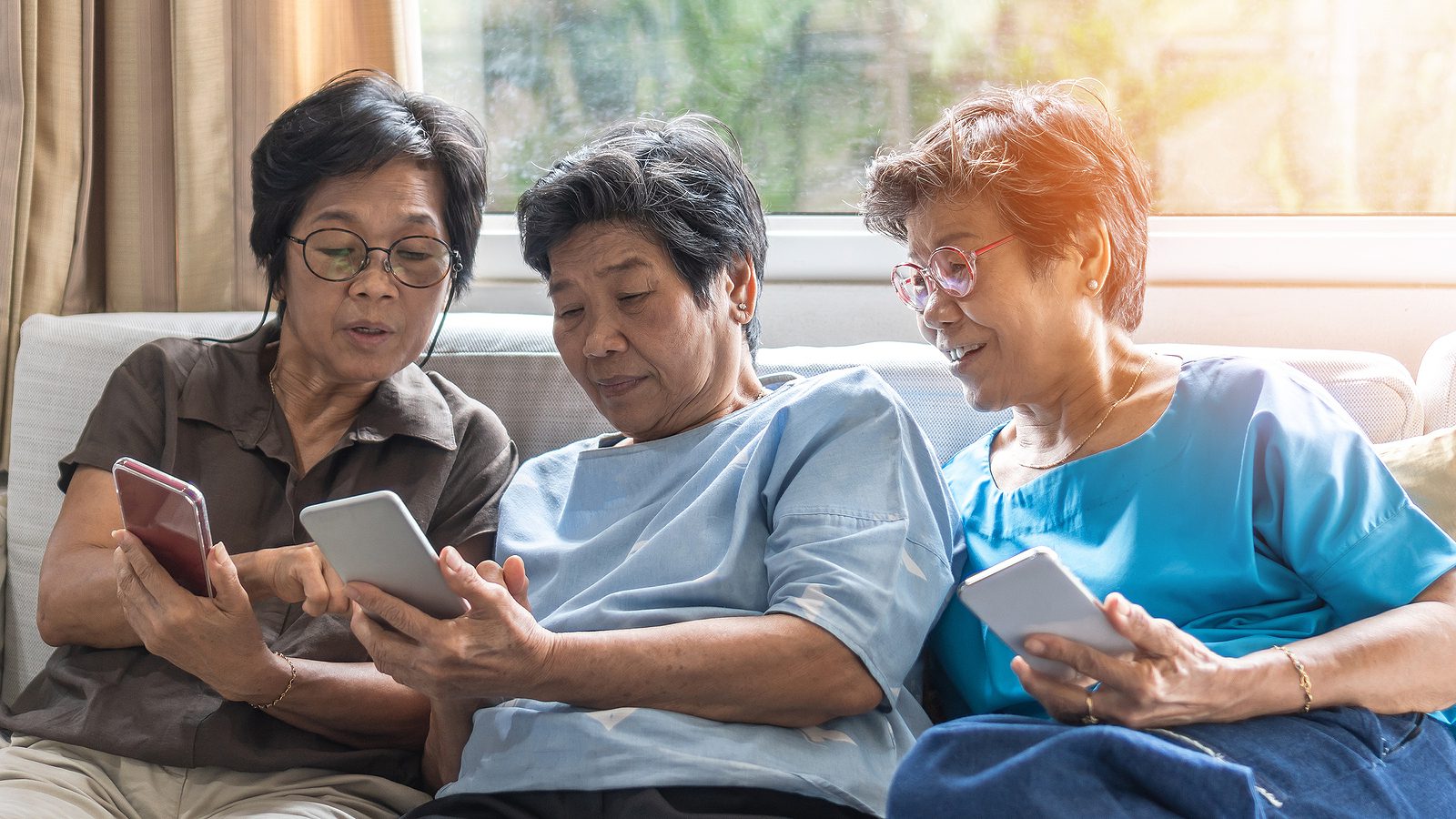How Technology is Enhancing the Senior Living Experience in 2025

There’s a common misconception that seniors and technology don’t mix. However, technology is wonderful for bridging the gap between generations through video calling, sharing media like TV shows and e-books, and social media.
According to an AARP survey, Americans over 50 are using more technology in their daily lives, whether at home or on the go. Nearly two-thirds of those survey participants say technology enriches their daily lives and makes aging easier.
For seniors, technology is no longer optional. It has become transformative in how communities like SRG Senior Living deliver safety, connection, and independence. We’ll share how technology can be an asset for digital health monitoring, staying socially connected, and using smart home features.
Digital Health Monitoring: Proactive Care Made Simple
The vast majority of older adults (age 65 and older) manage at least one chronic health condition. Digital health technology is one way to keep seniors safe and independent.
Wearable devices and sensors are great for real-time monitoring and personalized care. Smartwatches can help monitor heart rate, blood pressure, and sleep patterns. Fall detection technology automatically sends alerts to authorities if needed. GPS tracking is available for older adults who have memory concerns.
Remote monitoring systems, such as team dashboards, display real-time health data and signal warning systems before health changes occur. This proactive intervention reduces emergency room visits by leveraging helpful technology.
Telehealth and virtual care allow doctors and specialists to meet with patients via video appointments. Virtual care can help eliminate transportation and mobility barriers for patients who cannot drive themselves. Medication management apps give reminders to prevent missed doses and help people take their medicines regularly.
This technology for seniors means earlier interventions and better outcomes for everyone. Families can have remote access to a loved one’s health updates (with their permission).
Staying Connected: Video Calls and Communication Tools
As we age, we tend to spend more time alone, which can lead to loneliness and isolation. Isolation is common among older adults and is linked to chronic disease, depression, and other health issues.
Technology is a helpful tool that allows older adults to feel closer through digital connection. Video calling platforms like Zoom, FaceTime, Google Meet, and Facebook Portal are all easy ways to see someone and catch up. Large-screen tablets are designed for easy use and navigation. Features like one-touch calling are designed for simplicity.
Beyond family calls, virtual book clubs, exercise classes, and religious services, there are plenty of ways to be involved without leaving the comfort of your home. Online learning opportunities and hobby groups are also great ways to stay connected through shared interests. Digital pen pal programs connect communities, like older adults and children, or older adult writers. These groups offer a sense of community and belonging for like-minded people across states.
Tech coaches in senior living communities can support residents by teaching them about various online platforms. The relationship between seniors and technology becomes natural with proper support and guidance.
Even if you’re living alone, senior living communities like SRG offer many opportunities to connect with like-minded people. From chatting with a neighbor over coffee to meeting someone new in an exercise class, residents have access to a built-in network of individuals just waiting to meet them through a program or service at SRG.
Smart Home Features: Safety Meets Convenience
Smart home technology is excellent for adapting spaces to your needs. Voice-activated assistants like Alexa and Google Home can play music, adjust the volume, create lists, and perform other hands-free tasks without a human having to lift a finger. For those with limited mobility, this is an accessible option.
Automated safety features can help prevent injuries and maintain comfort. Motion-sensor lighting can help older adults avoid nighttime falls, and smart thermostats maintain comfortable temperatures. Door and window sensors can be enabled for security, while stove auto-shutoff technology prevents accidents before they happen.
Health and wellness automation can help track health. This is especially helpful for seniors who have cognitive or memory issues. Smart bed sensors can monitor sleep and movement to better understand sleep health. Automated medication dispensers can be configured to send alerts at the times when medication is needed. Air quality monitors ensure the air is safe to breathe.
Technology for seniors isn’t about replacing human care—it’s about enhancing their independence. This innovative technology allows seniors to remain independent and age in place longer. By reducing caregiver burden, technology can also improve the safety and quality of life for seniors.
SRG’s Forward-Thinking Approach
Technology enhances senior living through health, connection, and convenience. At SRG, we believe technology should enhance, not replace, human connection. There are several ways seniors can use technology to their advantage.
SRG is committed to team training on new technologies and listening to resident feedback about technology needs. We work to create a balance between innovation and personalized care.
Discover how SRG’s tech-enhanced communities can improve the quality of life for you or your loved one. Contact us today or find a community near you to schedule a tour. Technology empowers seniors to live fuller, safer, more connected lives.




